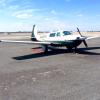3 blade vs. 2 blade on M20J
-
Members Online
- hammdo
- Ibra
- jamesyql
- N305EP
- Rmfriday
- Eric Burris
- dkkim73
- N201MKTurbo
- Losbright1
- bigmo
- Patrick Horan
- NickG
- Fred10
- Seth
- flyboy0681
- jetdriven
- Rwsavory
- Ryan ORL
- Beaglesfly
- Rmnpilot
- CCAS
- Igor_U
- TCC
- AJ88V
- ohdub
- redbaron1982
- mitchsm
- Oklahoma Mooney
- 47U
- jcovington
- Jim Peace
- Ed de C.
- UteM20F
- gabez
- Marc B
- MarkC
- Will.iam


Recommended Posts
Join the conversation
You can post now and register later. If you have an account, sign in now to post with your account.